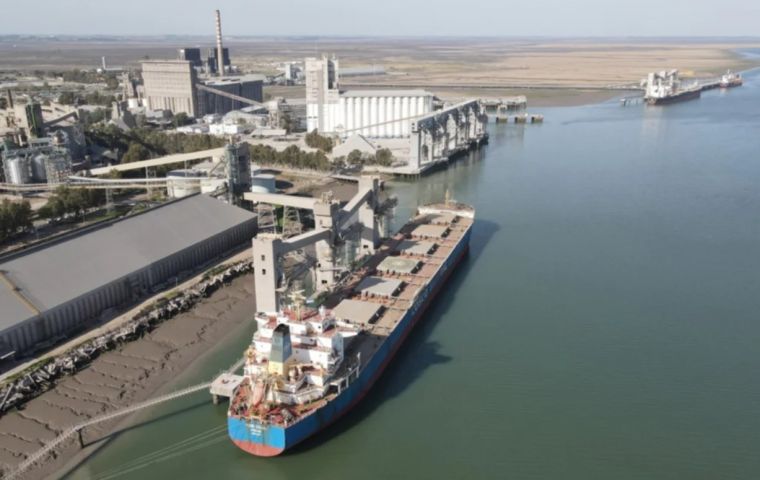MercoPress. South Atlantic News Agency
Argentine grain exports have to be completed in the Atlantic because of insufficient draft along the Parana waterway
 The Bahia Blanca grains and oil seeds storage facilities
The Bahia Blanca grains and oil seeds storage facilities With the Parana crucial waterway again beginning to suffer the consequences of lack of a sufficient water level, making the loading of cereals and oil seeds at the main Argentine exporting port of Rosario, it is estimated that in the remaining months of the year, Bahía Blanca directly on the Atlantic will be receiving probably half a million tons of additional grains to dispatch.
According to ArgenPorts, if all this extra grain arrives by road instead of rail, approximately 18,000 more trucks are expected to enter the local terminals. Bulk carriers are expected to load some 8,000 additional tons each, at Bahia Blanca, without the need of extra vessels.
“Towards the end of August, we have been seeing a significant recovery in the volumes shipped, in the order of 30%,” said Bahia Blanca sources consulted by ArgenPorts.
Furthermore, according to rainfall forecasts and projections on river levels, the low water level is estimated to persist until the end of 2024. This means the higher level of loading completion, which is already being observed, will continue over time.
“Although it is a bit early to make projections, if this happens, we could be talking about some 500.000 additional tons due to the drop in water levels.”
In this context, while completion levels at the Bahía Blanca terminals used to be between 20,000 and 24,000 tons of grain, these figures have now increased to between 30,000 and 32,000 tons.
Although the situation has not yet reached the critical levels experienced during the low tide peak in 2022, grain ships leaving the ports of Greater Rosario have been setting sail with significantly reduced cargo.




Top Comments
Disclaimer & comment rulesCommenting for this story is now closed.
If you have a Facebook account, become a fan and comment on our Facebook Page!